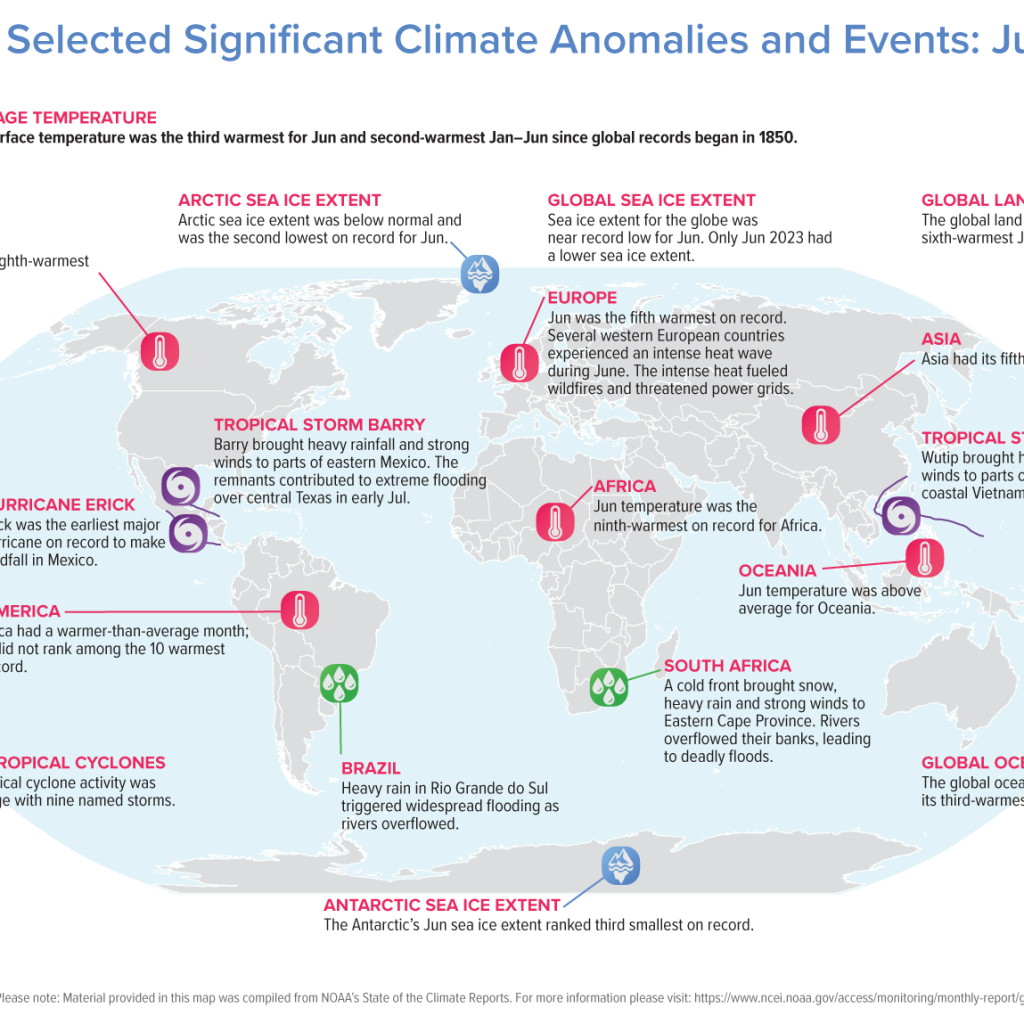June 2025 third-warmest on record: NOAA
Past three Junes warmest ever recorded

Credit: NOAA/NCEI
National Oceanic and Atmospheric Administration – Last month was the third-warmest June on record worldwide, behind those in 2023 and 2024, the United States NOAA reported.
June 2025 recorded the third-highest June global surface temperature in NOAA’s 176 years of record keeping. The temperature anomaly for June 2025 was 0.98 degrees Celsius higher than the 20th-century average. All 10 warmest Junes on record have occurred since 2016, and June 2025 extended the streak of consecutive Junes with above-average global temperatures to 49 years. Notably, June 2025 was the first month since May 2023 where the global temperature anomaly was below 1.0 C.
El Niño-Southern Oscillation (ENSO) remained in a neutral-phase, meaning neither El Niño nor La Niña were present last month. According to NOAA’s Climate Prediction Center, ENSO-neutral is most likely to persist through the Northern Hemisphere summer (Southern Hemisphere winter).
June 2025 saw widespread warmer-than-average temperatures across most of the globe. The most significant high temperature anomalies, exceeding 1.0 C above average, were observed over parts of North America, Europe, central Asia, western and eastern Antarctica, and the northern Pacific Ocean. Record-high temperatures were also a notable feature of June 2025, covering nearly four per cent of the Earth’s surface. These June record highs were observed in various regions, including parts of western Europe, central Asia, Africa, and across the North Atlantic, the Indian, Pacific, and Southern Oceans.
In contrast, some areas experienced cooler-than-average temperatures. These cooler conditions were found in parts of the higher latitudes of the Arctic, Greenland and the North Atlantic, as well as parts of northwestern and northern Asia, India, northern and eastern Australia, central Antarctica and the eastern tropical Pacific Ocean. The only area that experienced record-cold June temperatures was a small part of the western Southern Ocean, accounting for just 0.2 per cent of the Earth’s surface.
North America had its eighth-warmest June on record, while the Arctic’s June 2025 temperature anomaly was 1.2 C, the lowest since June 2017.
The January to June 2025 global surface temperature anomaly was +1.21 C, making it the second-highest such period in the 176-year record. This anomaly was only 0.08 C cooler than the warmest January to June period on record, which occurred in 2024. Based on a statistical analysis by scientists from the National Centers of Environmental Information, there is a very high likelihood, greater than 99 per cent chance, that 2025 will rank among the five warmest years on record.
Regions that experienced drier-than-average conditions included parts of northern Canada, the western contiguous U.S., as well as the southern half of Europe, central and western parts of Asia and southern and eastern Australia. In contrast, southern and western Alaska, the eastern half of the U.S., northern South America, northern Europe and widespread parts of Asia had wetter-than-average conditions.


